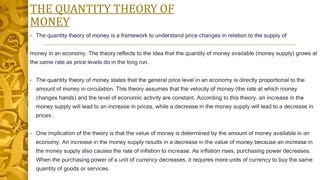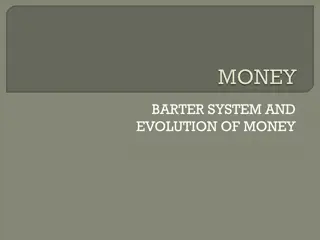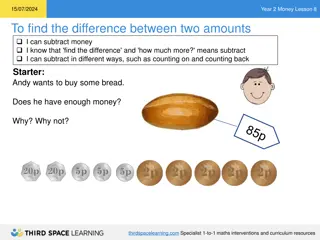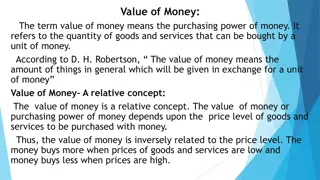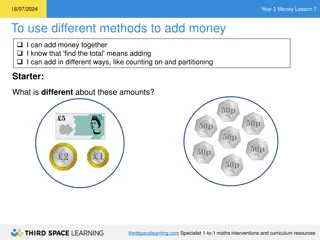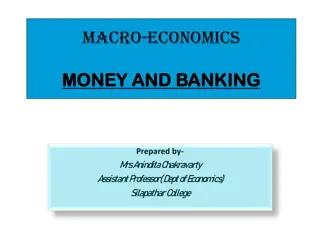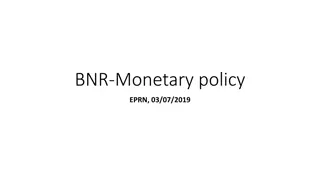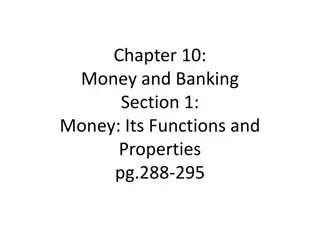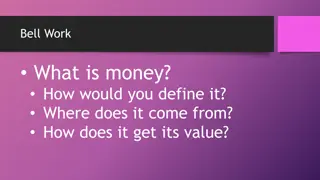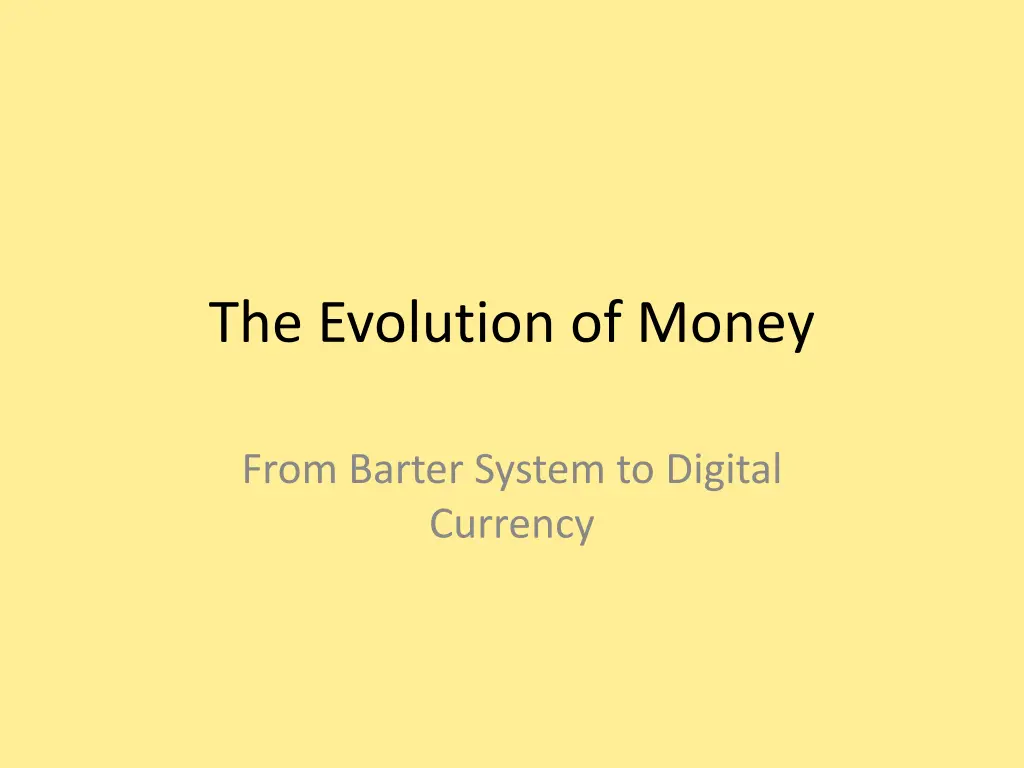
Evolution of Money: From Barter to Digital Currency
Explore the fascinating journey of money from the primitive barter system to the modern era of digital currency. Learn about the evolution of barter, commodity money, metal coins, paper money, banknotes, banking systems, and the rise of digital money and cryptocurrencies. Understand how transactions have evolved over time, shaping the future of financial systems.
Download Presentation

Please find below an Image/Link to download the presentation.
The content on the website is provided AS IS for your information and personal use only. It may not be sold, licensed, or shared on other websites without obtaining consent from the author. If you encounter any issues during the download, it is possible that the publisher has removed the file from their server.
You are allowed to download the files provided on this website for personal or commercial use, subject to the condition that they are used lawfully. All files are the property of their respective owners.
The content on the website is provided AS IS for your information and personal use only. It may not be sold, licensed, or shared on other websites without obtaining consent from the author.
E N D
Presentation Transcript
The Evolution of Money From Barter System to Digital Currency
Introduction - Money has evolved over time to facilitate trade and economic growth. - Initially, goods were exchanged directly in a barter system. - Over time, various forms of money emerged, making transactions easier.
1. Barter System - Earliest form of trade where goods were exchanged for goods. - Challenges: - Double coincidence of wants required. - Difficulty in determining value. - No standard unit of exchange.
2. Commodity Money - People started using valuable goods (gold, silver, salt, cattle) as money. - Benefits: - Universally accepted. - Had intrinsic value. - Limitations: - Difficult to carry and store. - Value varied by location.
3. Metal Coins - First metal coins appeared around 600 BCE in Lydia (modern-day Turkey). - Made from gold, silver, bronze, and copper. - Advantages: - Standardized value. - Durable and portable. - Still used in modern economies.
4. Paper Money - Originated in China during the Tang Dynasty (7th century CE). - Became widely used due to ease of carrying and production. - Backed by gold and silver reserves in early economies. - Today, fiat currency is used (not backed by physical commodities).
5. Banknotes & Banking System - Introduction of banks allowed safe storage and lending of money. - Banknotes were issued as a promise to pay the bearer. - Led to modern banking systems and financial institutions.
6. Digital Money & Cryptocurrencies - Credit cards, online banking, and mobile payments revolutionized transactions. - Cryptocurrencies (e.g., Bitcoin, Ethereum) emerged as decentralized digital money. - Future of money is moving towards digital and cashless economies.
Conclusion - Money has evolved to make transactions more efficient. - Digital payments and cryptocurrencies are shaping the future. - Understanding the history of money helps us appreciate its role in economic development.
Thank You! Any Questions?



